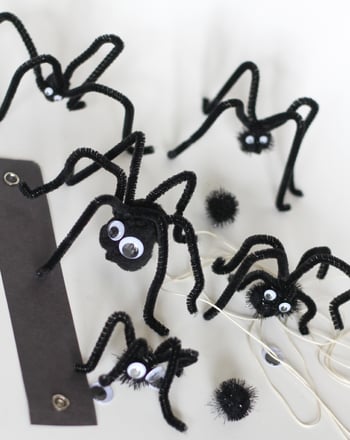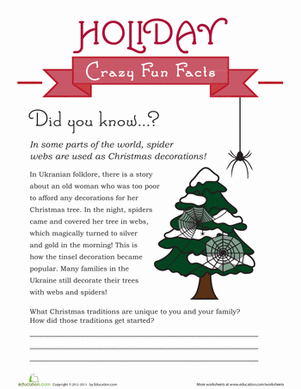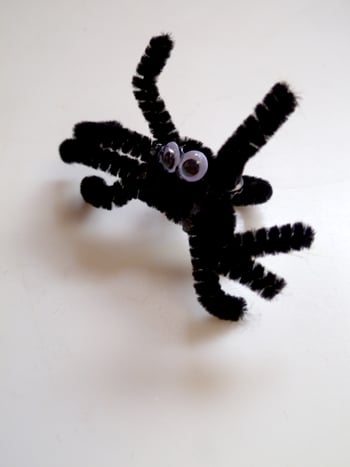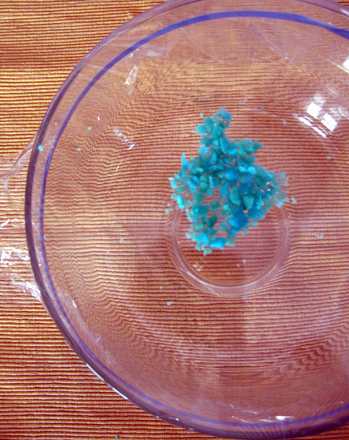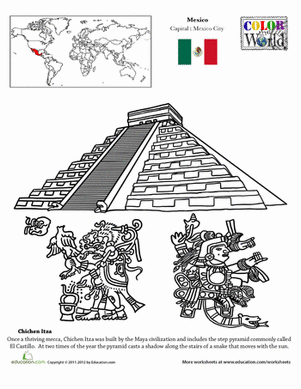Science project
Spider Science: Exploring the World of Webs
Spiders don't go to grocery stores or fast food chains to get their food -- they set up traps and wait for their food to come to them! You're probably already pretty familiar with their clever little traps. Spider webs are everywhere from your backyard to your bedroom. In this project, we'll explore spider science with a fun look at these webs.
Problem:
How do spiders build their webs?
Materials:
- Black construction paper
- Talcum powder
- Hairspray
- Measuring tape
- Notebook
- Pencil
- Yarn
- Double-sided tape
- Backpack
Procedure:
- A spider scientist needs a spider web to study! Head outside to your backyard or nearby nature trail. Be sure to bring all your materials in a backpack.
- Look carefully in tall grasses or bushes to find spider webs.
- Measure the width and height of each web you find. Count how many threads cross through the center of the web and how many threads attach the web to the shrub.
- Recording your findings in your notebook.
- Can you find the spider who made this web? Are there any insects trapped in the web?
- Make a sketch of the web -- and the spider if you spotted him.
- Find a spider web to capture. Don't pick one that already has a spider on it.
- Gently dust the web with talcum powder. The powder will stick to the silk, making every thread appear white.
- Hold a sheet of black construction paper underneath the web.
- Gently move the paper towards the sky until the web detaches itself from whatever grass or shrub it was holding on to.
- Spray the web with hair spray.
- Set the paper and web aside to dry.
- While you wait, take a look at your notes. Spider webs seem pretty complex, don't they? How much bigger is the web compared to its spider creator? Could you make something that was five or ten times the size of you?
- So how do spiders make their webs? Write down your hypothesis, or guess, in your notebook.
- Measure your own height with the measuring tape. Record your height in your notebook.
- If you had to build a web like a spider, how big would it be? Multiple your height in inches times ten.
- Take your yarn and attach a piece of double-sided tape to one end.
- Find a place outside where you want to build your web. Remember, you're going to need a lot of room!
- Study your notebook sketchings of webs as well as the real spider web you captured.
- Start unraveling your yarn. Let the sticky end attach to a tree branch or wall.
- Try to mimic the patterns of the spider webs you studied. How similar does your finished web look to the real thing?
Results:
Unless you have super spidey senses, you probably were not able to recreate a perfect spider web. Don't feel bad -- no human can.
A spider creates its webs by releasing a single thread, just like you did. Once the sticky end attaches to something, the spider will attach the other end to its starting point. Then the spider does something you can't do. It walks across the thread. From there it begins releasing more threads in different patterns depending on what kind of web it will be. Some webs are oval and some webs are circular. However, all webs have a mixture of non-sticky threads and sticky threads that make up the larger pattern.
Why?
No one teaches spiders how to make their webs; they just seem to know. This stumps scientists a bit, but this fact is an excellent example of how even the tiniest insects somehow know how to keep themselves alive.
Spiders are born with the ability to spin silky spider web threads that can either be sticky or non-sticky. While their tiny legs walk along the non-sticky threads, the sticky threads are used to trap yummy spider snacks like insects or even small birds.
You don't think that's all there is to know about spider science, do you? There's so much more to discover. Do you know what happens when an insect gets trapped in a spider's web? You can create your own super sticky web to find out. Do you think it would catch any insects? Guessing and testing are what real scientists do every day -- and now so can you!
Education.com provides the Science Fair Project Ideas for informational purposes only. Education.com does not make any guarantee or representation regarding the Science Fair Project Ideas and is not responsible or liable for any loss or damage, directly or indirectly, caused by your use of such information. By accessing the Science Fair Project Ideas, you waive and renounce any claims against Education.com that arise thereof. In addition, your access to Education.com's website and Science Fair Project Ideas is covered by Education.com's Privacy Policy and site Terms of Use, which include limitations on Education.com's liability.
Warning is hereby given that not all Project Ideas are appropriate for all individuals or in all circumstances. Implementation of any Science Project Idea should be undertaken only in appropriate settings and with appropriate parental or other supervision. Reading and following the safety precautions of all materials used in a project is the sole responsibility of each individual. For further information, consult your state's handbook of Science Safety.



